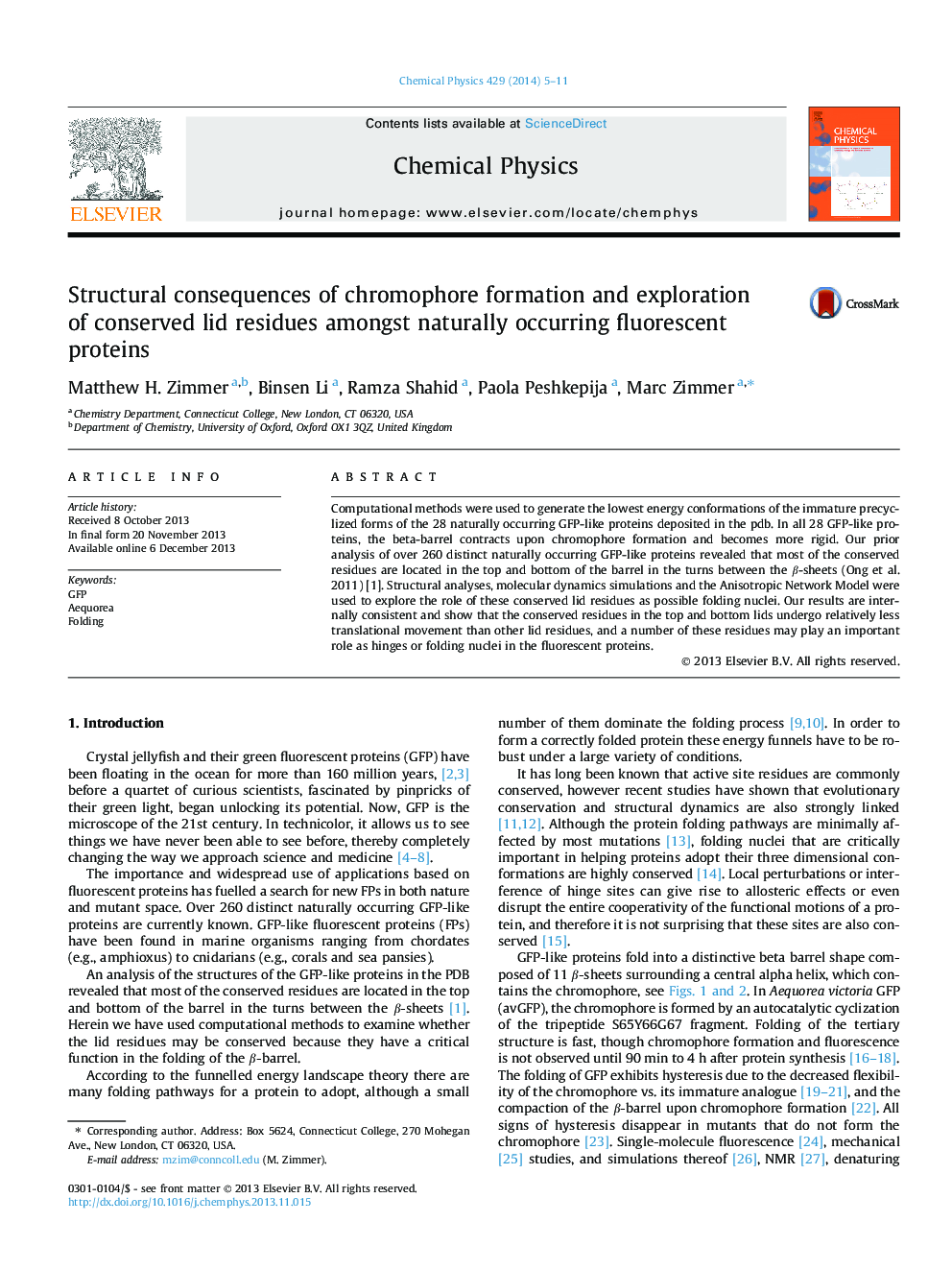| Article ID | Journal | Published Year | Pages | File Type |
|---|---|---|---|---|
| 5373753 | Chemical Physics | 2014 | 7 Pages |
â¢Conserved lid residues in FPs may act as hinge residues or folding nuclei.â¢Mature forms of FPs are more rigid and compact than immature forms.â¢Compaction associated with maturation may aid in chromophore formation.
Computational methods were used to generate the lowest energy conformations of the immature precyclized forms of the 28 naturally occurring GFP-like proteins deposited in the pdb. In all 28 GFP-like proteins, the beta-barrel contracts upon chromophore formation and becomes more rigid. Our prior analysis of over 260 distinct naturally occurring GFP-like proteins revealed that most of the conserved residues are located in the top and bottom of the barrel in the turns between the β-sheets (Ong et al. 2011) [1]. Structural analyses, molecular dynamics simulations and the Anisotropic Network Model were used to explore the role of these conserved lid residues as possible folding nuclei. Our results are internally consistent and show that the conserved residues in the top and bottom lids undergo relatively less translational movement than other lid residues, and a number of these residues may play an important role as hinges or folding nuclei in the fluorescent proteins.
Graphical abstractDownload full-size image
